"I want to create an opportunity for people to learn a little about child poverty."
Reina Hitomi, 4th year student School of Social Sciences
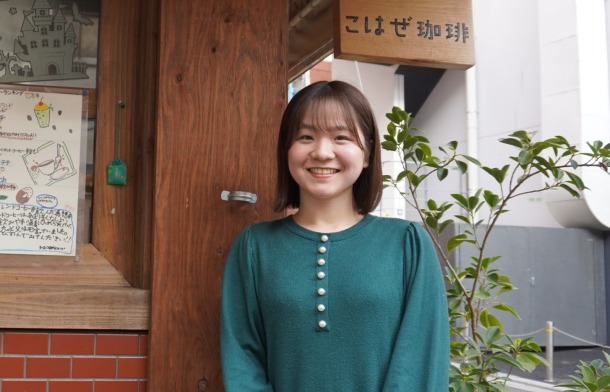
In front of Kohaze Coffee, where a turning point in her picture book production took place
Independence Support Homes are places of living for 15-20 year old children who, for some reason, can no longer live at home, and which encourage their independence. Reina Hitomi, from School of Social Sciences works part-time as a staff member at such an independence support home, supporting the children's lives and working hard to create a picture book to raise awareness of it. We asked her about what led her to work at an independence support home, how she came to create a picture book, and her thoughts on the issue of child poverty.
--What led you to start working at an independent living home?
It all started when I became interested in child welfare in a class I took in my first year of university. I grew up in a single-parent household and had lived with an adoptive father until one point, so I had a vague sense of discomfort that my home was different from other homes. This experience made me want to learn more objectively about the structure of child poverty and child abuse. In class, we learned about welfare in general, and we had an opportunity to discuss child poverty. One student said, "If poor children study hard and get into a good university or company, the problem will be solved." I felt a sense of discontent with this statement, which sounded like a self-responsibility argument. I became interested in the current situation of poor children, and as I researched it, I learned about independent living homes.
Unlike child welfare institutions, independent living homes are home to children who have completed compulsory education. Therefore, it is assumed that they have to earn their own living, and there is little financial support, but I was shocked to find that there were people there who were 19 years old, just like me at the time. As I was researching, I came across "Minna no Ie(みんなのいえ)" in Chiba Prefecture. What made this facility different from others was that it actively disseminates the reality of the situation on the ground, while many facilities do not have websites or even publish contact information for various reasons. And as I learned about the living conditions and the way the staff thought, I gradually began to want to be involved with this facility, and before I knew it, I was sending them an email asking directly, "I want to work there too!" At the time, there were no job advertisements, so looking back, I think I was quite determined.
The actual work was wide-ranging, from housework to employment support and grant application procedures. Among these, I had many opportunities to give advice to the children at the facility, and the moments when I realized they had opened up to me were very rewarding and still leave a strong impression on me. As an "adult" who encourages the children to become independent, I have been deeply moved by the way they faced society and themselves and grew in a positive way, and I have learned a lot from them.
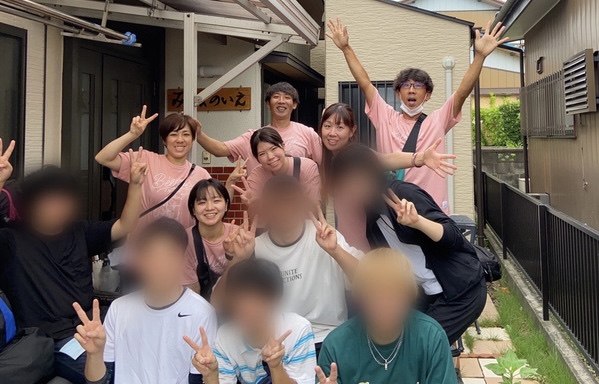
When she was working as a staff member at the "Minna no Ie(みんなのいえ)" for people with disabilities, Hitomi is the second person from the left in the pink T-shirt.
--I heard that you are currently working on a picture book based on the theme of "Minna no Ie(みんなのいえ)". Please tell us how you came to create it.
I became aware of the low awareness and unconscious prejudice surrounding independence support homes, which is what made me decide to create a picture book. When I tell my friends that I work at an independence support home, there is often an atmosphere of not wanting to delve too deeply into the subject, which I think is probably because the general public has a negative image of children who come from institutions as being pitiful. That is why I wanted to convey the fact that independence support homes are bright, positive places in the form of an easy-to-understand, easy-to-read picture book.
However, I don't have any artistic talent, so I thought about what to do about that every day. Then, I happened to come across an illustration drawn inside "Kohaze Coffee" on Okuma Dori Shopping Street, where I happened to be visiting with a friend. I fell in love with the unique touch at first sight, and when I asked the manager about the illustration, he told me that it had been drawn by someone who works there part-time. I immediately contacted that person, proposed a proposal, and asked him to illustrate, and he immediately replied that he would be happy to participate. Thus, in January 2023, I began full-scale production of a picture book titled "Inside Sudachi."
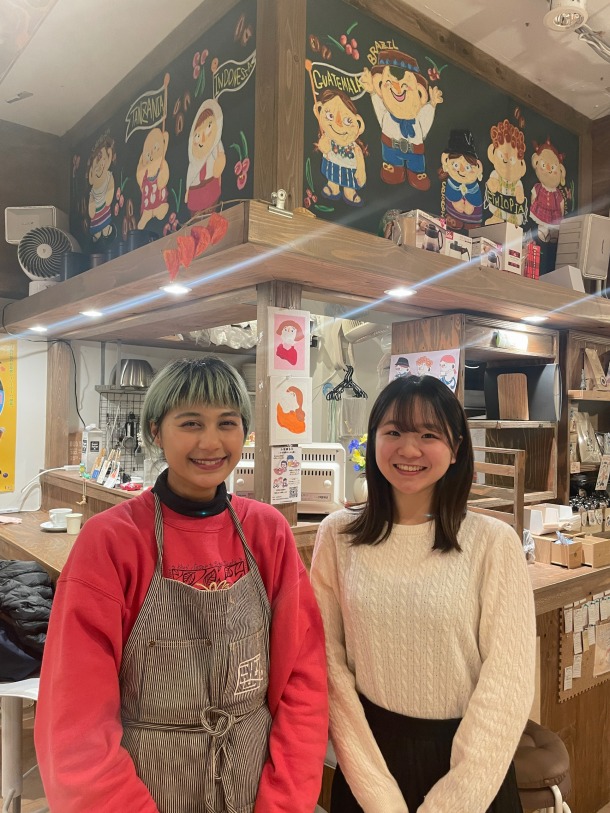
Picture book author Marusa (left) and Hitomi (right)
--Were there any points you focused on when creating the picture book?
In creating the picture book, I was responsible for almost everything except illustrations, including planning, composition, and scriptwriting, and I worked on the production while exchanging opinions with the picture book author, Marusa. The first picture book we worked on, "Inside Sudachi", is a snapshot of the everyday life of a home for independent living from the perspective of the staff. The key point we kept in mind was to convey life at the facility as realistically as possible. For example, in addition to including stories that I actually experienced as a staff member, we also interviewed independent living homes other than "Minna no Ie(みんなのいえ)" and asked various staff members about their experiences and what they value in their work.
I am also working on another picture book called "I Want to Ride a Car." This is a story about the growth of a person who actually lived in a facility and became independent. In contrast to "Inside Sudachi," the story is told from the perspective of the main character, a child.
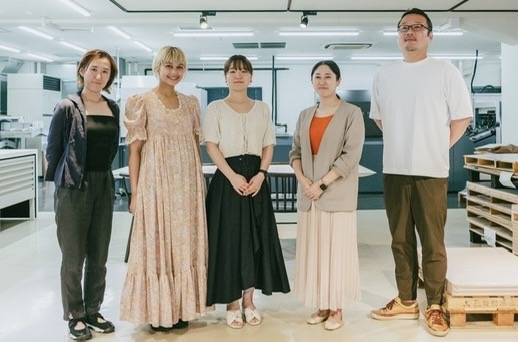
People involved in the production of the picture book. From the left, the person in charge of photography and video design, Marusa, Hitomi, and a person from the printing company.
--Please tell us about the difficulties you faced in producing the picture book.
Since the production of the picture book required various expenses such as illustration fees and bookbinding fees, I decided to do crowdfunding in December 2023, but it was difficult to materialize this project by setting the target amount, how it would be used, and the contents of the returns, and to create a recruitment page. During the crowdfunding period, I was busy with final exams and reports, as well as part-time work and job hunting, so I felt like I was going to burst... I was very worried about whether I could reach the target amount, but on the first day, we received 40% of the target amount, and thankfully, we were able to reach the target amount of 1 million yen in less than a week. At first, the support came from people I knew, but gradually I received support from people I didn't know. I also had a connection with the Secretary General of the National Council of Independent Living Homes, and he spread the word to related organizations nationwide, so I feel that it was through connections that we were able to achieve our goal this time.
また、絵本作家の方に私が絵本で表現したいイメージをうまく言語化して伝えることも非常に難しかったです。自立援助ホーム自体が世間的にあまり知られていないので、絵本作家の方に自立援助ホームの取材に立ち会っていただき、そのリアルに触れていただくことで、少しずつ方向性を定めることができました。今こうやって製本の実現に向けて着実に歩みを進められているのは、本当に多くの方の支えがあったからだと思います。
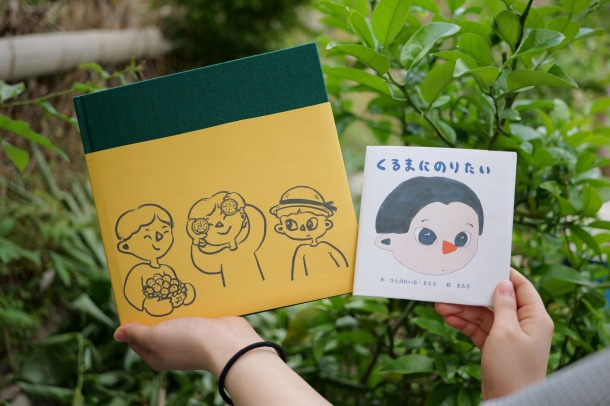
5月27日完成予定の『スダチのナカミ』(左)と『くるまにのりたい』(右)の見本
--You said that your interest in child welfare was sparked by a university class, but why did you decide to enroll in Waseda University?
I had a strong desire to study abroad at university, so I aimed for Waseda University, which has many overseas partner schools and offers many options for studying abroad. In the end, I chose to deepen my knowledge of child welfare in Japan and did not study abroad, but I feel glad that I enrolled at the university because the students around me are very international and diverse. Another reason for enrolling was the generous Scholarship.
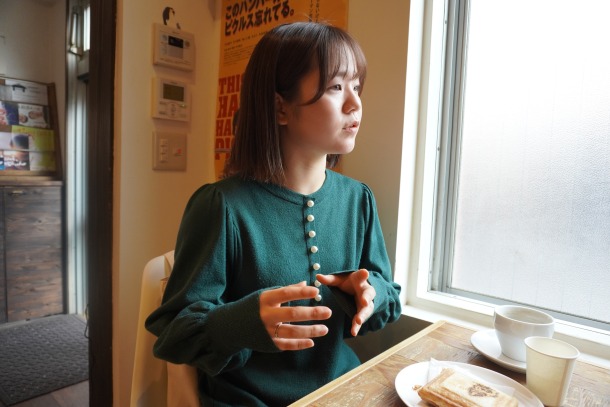
Hitomi also studied abroad in the UK for a long period during her high school years.
--Finally, please tell us about your future prospects and your thoughts on society.
As for my outlook for creating picture books, since there are currently only two ways to deliver picture books, through crowdfunding returns and donations, I would like to get in touch with publishers and develop a distribution channel so that they can be sold in bookstores. As for my own outlook for the future, I would like to work in a public-interest business at the company where I will be employed, and approach various social issues, including child welfare. Although I cannot return to my own childhood, I would like to continue thinking about what I can do as an adult for the children who will live in the future. There are many people in the world who have lived a life that is not related to abuse or poverty. That is why I would like to create more opportunities for such people to learn a little about child poverty. First of all, I hope that this picture book will be one of those opportunities.
No.869
Interview, text and photography: Waseda Weekly Reporter (SJC student staff)
Sotaro Tsutsumi 4th year student School of Social Sciences
【Profile】
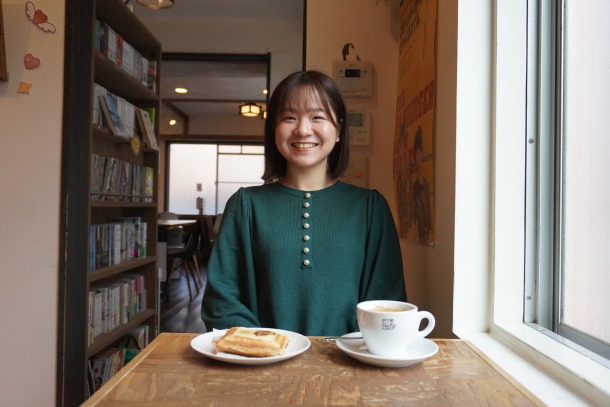
Born in Kyoto Prefecture. Graduated from Kyoto University of Advanced Science High School. Studied abroad in the UK for 10 months during high school. Hobbies are cooking and collecting tableware. Loves Gen Hoshino and cats. The photo was taken at Kohaze Coffee, where he met picture book author Marusa.
The Instagram account for "Inside Sudachi", which updates the picture book production process: @sudachi_nakami


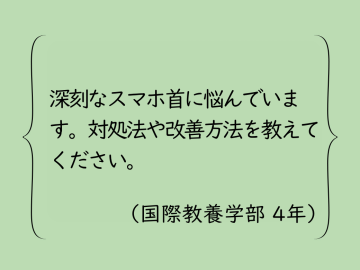

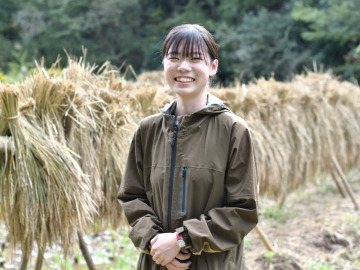
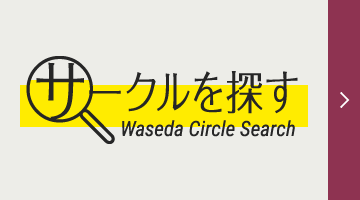
![[Save version] Map of the four main campuses](https://www.waseda.jp/inst/weekly/assets/uploads/2025/09/17cb2975123fc5103172ef60bd98608d-610x458.jpg)

